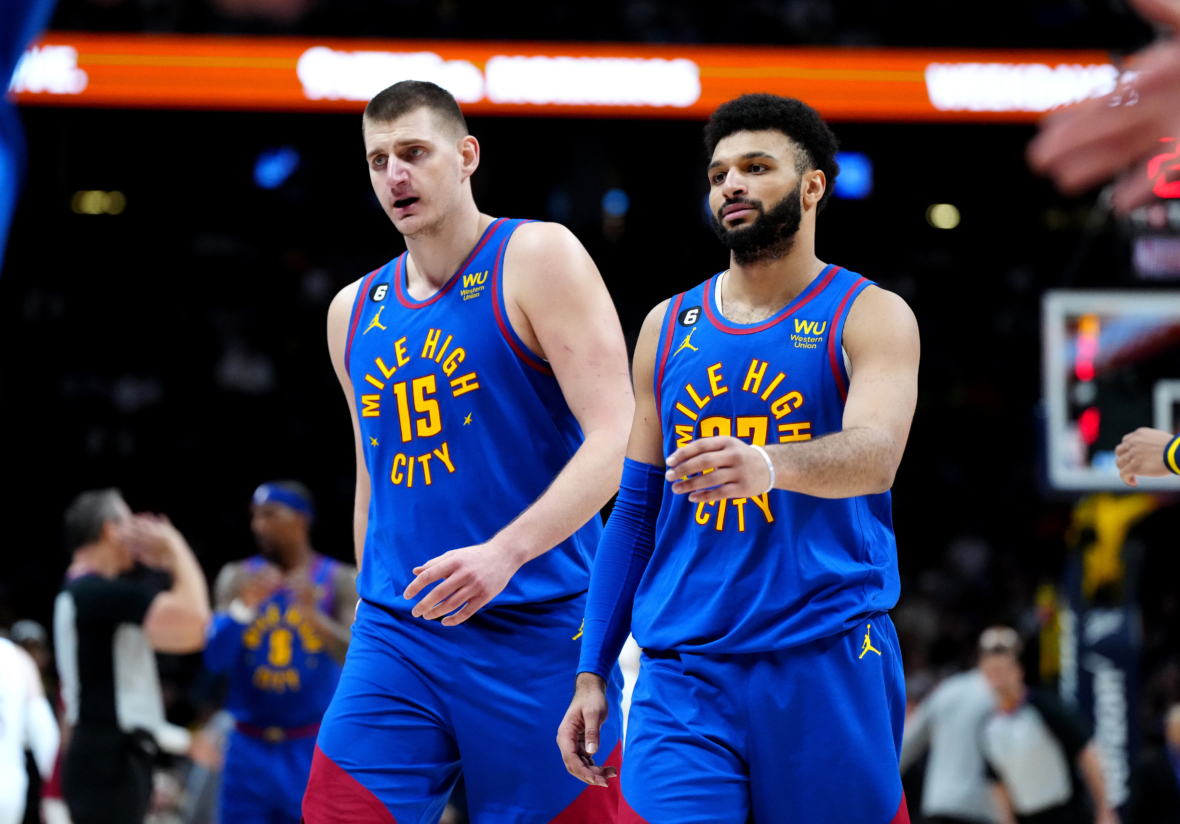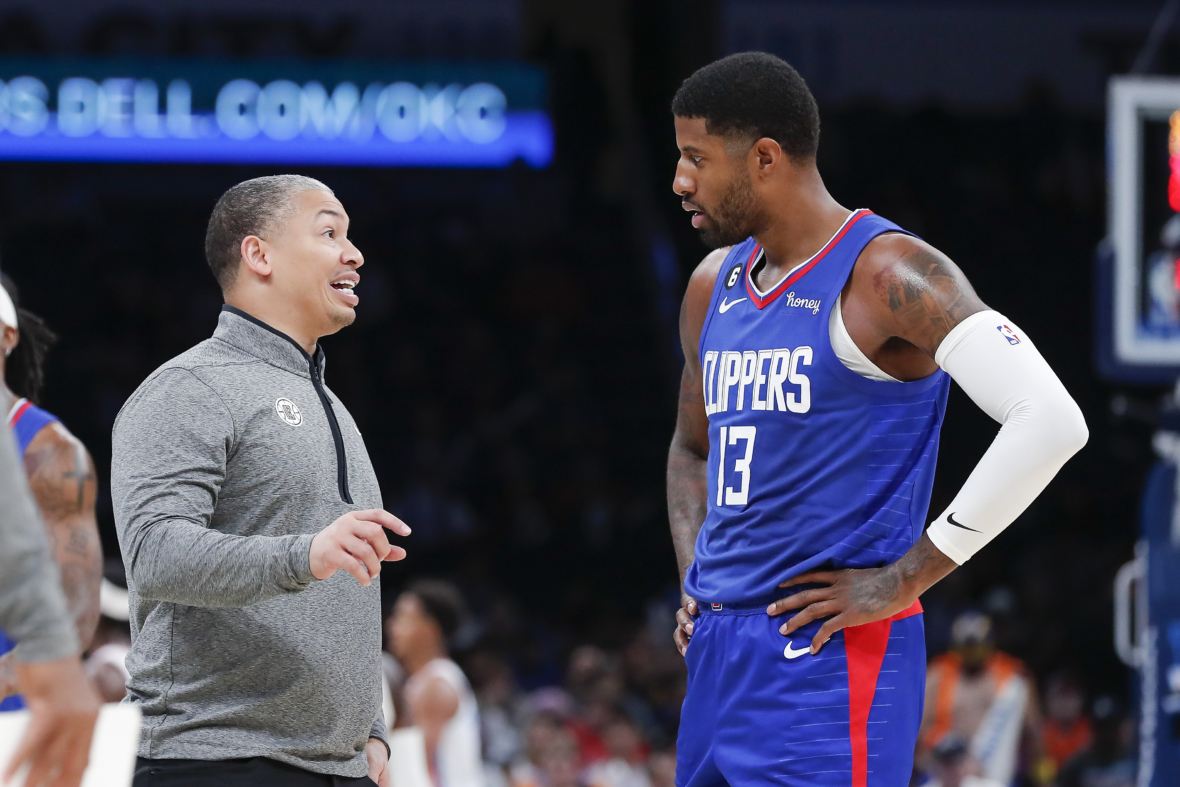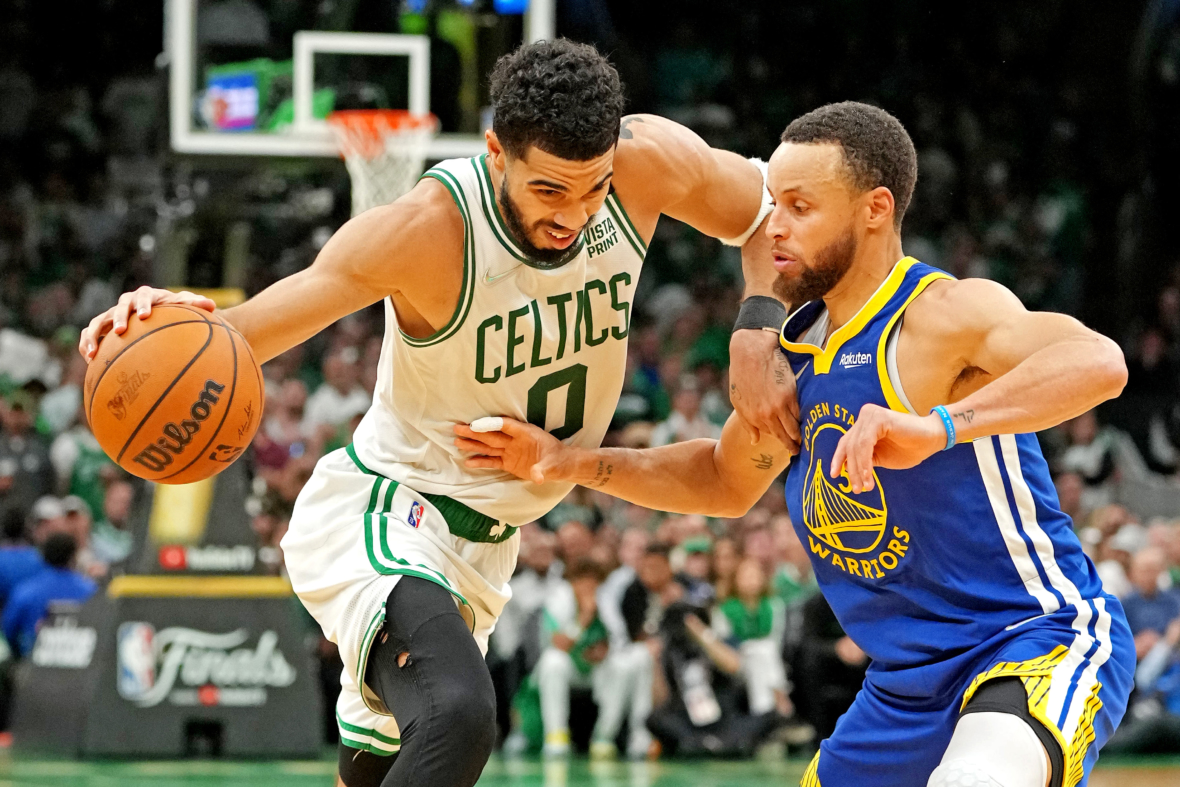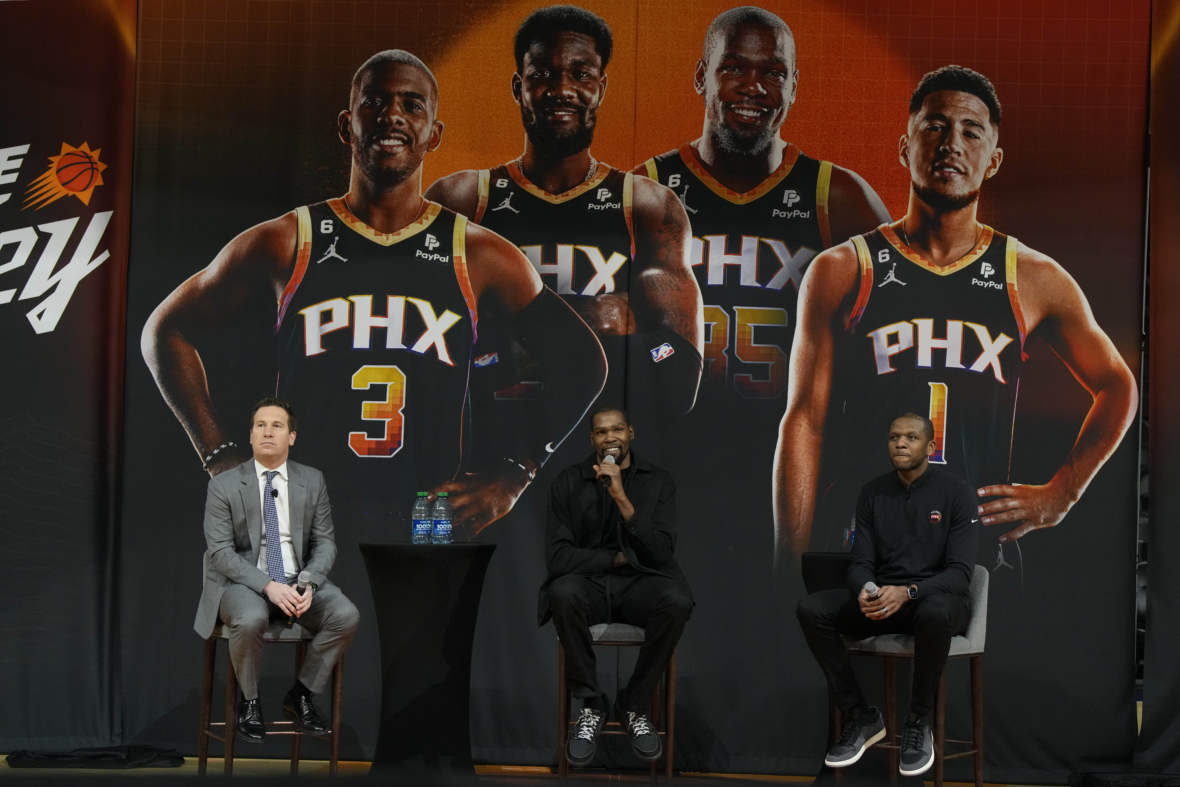
What a roller coaster the last two weeks have been in the NBA. The trade deadline was an
adrenaline-spiked high, followed by the All-Star Game acting as a brutal comedown of boredom
and bust.
We had this week to clear our palettes of spectacle and get back to what matters — the games. With major chess pieces rearranging on the board, we’ve selected what teams have survived the reshuffling of powers as standing contenders.
That word, “contenders,” has been used ad nauseum, stripping the word of most of its meaning.
Like “superstar,” it is difficult for fans to reach a consensus on who the word encapsulates. We
have done our best to narrow down the teams best equipped to stand tall in June while detailing
the intangibles that place them at the top of the echelon.
Each team will be rated by three metrics that make it a contender, which will vary from team to team. We have tried our best to ignore the obvious markers of success and instead focus on the secondary storylines that make each team chosen a contender.
Denver Nuggets

The Big Three: For over two seasons, Nikola Jokić has held down the fort primarily by himself. Both co-stars, Jamal Murray and Michael Porter Jr. sustained severe injuries, which kept them out of action extensively. As the centerpiece of the Nuggets’ offense and defense, Jokić racked up back-to-back MVP awards. During this stretch, they were also bounced early in the playoffs, losing in the second round in 2021 and the first round last year. With Murray back to his old form (20 points per game, 6 assists per game) and Porter Jr. finally healthy and hitting a lethal 40 percent from 3, the Nuggets have their big three intact and ready to compete for a deep playoff run.
Playoff tested: Speaking of the early playoff exits, the Nuggets have earned their stripes through the types of playoff disappointments that build character. After losing to the eventual Los Angeles Lakers in 2020, the Nuggets look to return to their Bubble form and position themselves as the team with the most experience and continuity heading into the playoffs.
Reinforced depth: Since the start of the Joker’s playoff run, he has been without an adequate backup. This has led to him averaging 37 minutes in the playoffs, unable to sit for the risk it would have on the score. The Nuggets front office felt the same, so they spent three second-round draft picks to acquire Thomas Bryant, who was having a productive year with the Lakers (12 ppg, 7 rpg) and was previously a part-time starter for the Washington Wizards. Bryant is a hard-nosed rebounder and stretch-five who gives the Nuggets a mini-version of the Joker’s intangibles when he sits, helping to maintain and extend leads.
Los Angeles Clippers

Depth overload: The Clippers already came into this season with the most talented roster. By adding Mason Plumlee, Eric Gordon, and Bones Hyland at the trade deadline, they have an embarrassment of riches. Plumlee gives the team a rugged, rebounding alternative to Ivica Zubac’s finesse game. At the same time, Gordon returns to the franchise that drafted him, bringing years of playoff experience, while third-year guard Hyland is the ultimate X-factor. If he can gel better with the Clippers than he did with the Nuggets, he could give them two things the many talented players on this team lack — ceiling and youth.
Elite coaching: Greg Popovich has been the undisputed best coach in the NBA for decades. With him approaching the end of his career, Ty Lue is the clear successor to that title. After winning a championship with the Cleveland Cavaliers, where he showed his elite in-game adjustments and ability to manage rotations, he coached a Clippers team in various stages of contention. He has sustained injuries to Kawhi Leonard and Paul George while keeping them in at the minimum of the Play-In in the two years he has been at the helm. With a championship coach leading the way, the Clips don’t have to worry about who they match up with in any round, as they will have the best coach in any series.
Bones Hyland: It’s easy to speculate but impossible to know for sure what the hell was going on in the Nuggets locker room that made Hyland such a bad fit. He was a highly productive, if not always efficient, lead guard for the Nuggets when Murray was injured. But something about his shoot-first temperament and need to start rubbed those around him the wrong way. Trading him seemed to be the top priority for the Nuggets before the deadline, so when he was moved, few were surprised. But what shocked everyone was the return, just two second-round picks for a guy averaging 12 ppg, 3 apg, and 2 rpg. With the Clips, he will be surrounded by many no-nonsense, hungry veterans who will only look for Hyland to play his role. If he can exceed in that regard, the Clippers will have solved their point guard problem and found the perfect counterpoint to their two-headed perimeter attack.
Boston Celtics

Jayson Tatum must discover his clutch gene: Tatum was masterful in last year’s NBA Finals run. He put the Celtics on his back amid juggernaut offensive performances. Well, at least until the Finals. On the biggest stage, against the Golden State Warriors, Tatum was outshined by his “Robin,” Jalen Brown. He performed terribly in the six-game series, starting with his 12 points on 3-of-17 shooting in Game 1. Even worse was his output in the elimination Game 6, where he shot 6-of-18 for 13 points and five turnovers. When the Celtics needed a clutch bucket, it wasn’t Tatum who delivered, but Brown, who dropped 34 points on 12-of-24 shooting in Game 6. For the Celtics to go all the way this season, they will need to be Tatum, a top-five MVP candidate this season, to be the go-to guy in crunch time.
Mike Muscala, Al Horford 2.0: When the Celtics shocked the world by winning Game 1 in Golden State, it was behind the hot perimeter shooting of Derrick White and Al Horford, who had 26 points, hitting 6-of-8 from three. That is where the Celtics are at their most potent when they can go small ball with a stretch-five who can rebound and bang with opposing bigs. At 36, Horford could never reclaim that magic in the Finals. Adding former Oklahoma City Thunder vet Mike Muscala gives them depth in the frontcourt. He’s also a bit younger than Horford at 31 years old,
shooting a career 38 percent from 3. He’s a seamless addition who fits the Celtics’ style of play and positional role at center.
Malcolm Brogdon’s moment: Ever since leaving the Milwaukee Bucks two years before they won the championship, Brogdon has languished in purgatory with the rebuilding Indiana Pacers. In his first year with the Pacers, he averaged 21 points and 10 assists in a first-round sweep by the Miami Heat. Now with the Celtics, he is the first guard off the bench, averaging 15 ppg, 4 rpg, and 4 apg. The Celtics will need his floor spacing and veteran leadership, especially when they inevitably match up against Brogdon’s old team, the Bucks, in the playoffs. The Warriors exposed the Celtics’
desperate need for a secondary ballhandler, and Brogdon gives them one of the best in the league in a backup role. The playoffs will be his return to relevance, where he can provide capable scoring and facilitation off the bench.
Phoenix Suns

Terrence Ross returns to relevancy: The buyout market rarely contains players who move the needle. But after the busiest and most insignificant trade deadline in recent memory, the buyout pool was the deepest it had been in years. No team benefited from it as much as the Phoenix Suns, who traded away their two best perimeter 3-and-D threats, Mikal Bridges and Cam Johnson, for Kevin Durant. The Orlando Magic waived long-time veteran Terrence Ross, a career 11 ppg and 36 percent perimeter shooter, freeing him up to join a contender. The Suns swooped in, luring him away from the Dallas Mavericks, who were his initial choice. He could potentially start or come off the bench on the Suns as a spark plug and defensive solution for opposing wings. Either way, Ross hasn’t played meaningful playoff basketball since his time in Toronto, where he was drafted. In Phoenix, he will be tasked with his most important role yet on the way to winning a championship.
Damion Lee must step up: Tasked with filling Jae Crowder’s 3-and-D role, Lee has brought a dawg mentality to the Suns’ relatively soft rotation. Lee has a defensive rating of 115.1 this season, which is not bad considering he is tasked with guarding the most lethal opposing player each game. But his 3-point shooting is where he’s scary, hitting from distance at a 43.9 percent clip. Lee will be counted on in the playoffs as one of the few perimeter guys left over from the Durant trade to knock down open shots from the double teams Devin Booker and Durant command.
Monty Williams’ toughest task yet: The internal strife and disappointment of the Suns have been well-chronicled. There are multiple clips of head coach Monty Williams and star center Deandre Ayton getting into it during huddles and timeouts. Williams has had to mitigate Chris Paul’s slow decline and a roster of guys who think they are better than they are. Now adding Durant to the mix will prove to be his biggest challenge. But Williams has been a player’s coach his whole career, a tenure that has garnered the respect of multiple generations of players, Ayton notwithstanding. For the Suns to take advantage of Durant’s arrival, he must continue to massage egos and balance shots, a difficult feat with three ball-dominant “stars” all needing to be on-ball.
Milwaukee Bucks

Brook Lopez’s last ride: Brook Lopez has completely rejuvenated and evolved his game at the age of 34. He has become one of the best perimeter shooting bigs in the league (37 percent) and interior defenders (2.4 blocks per game). He has been a Defensive Player of the Year candidate
and galvanized attention for a potential All-Star nod. He is averaging 14.5 ppg and 6.5 rpg, combining his career-defining footwork, back-to-the-basket game, and rugged paint presence. If the Bucks are to win another title, they will need everything Lopez has left to give.
Jae Crowder: The veteran Crowder got his wish. After exiling himself from the Suns rotation and demanding a trade, he got it when he was shipped to the Bucks from the Brooklyn Nets in the Kevin Durant blockbuster. The Bucks desperately need his no B.S. defense and timely three-point shooting (career 35 percent). Obviously, they have length and toughness in the starting lineup with Khris Middleton and Giannis Antetokounmpo, but they lack perimeter depth after their two stars. Crowder can slot in as a starting glue guy or lead the bench unit as a flamethrower from deep. Either way, the Bucks and Crowder found the perfect match for his skill set.
Khris Middleton figures it out: Injuries, production, and a slow start have all plagued Middleton this season as he has tried to regain his All-Star form of last year. He has only played 17 games this year, averaging 13.6 ppg, the lowest since his third year in the league. His shooting splits aren’t much better, as he is only hitting 28.9 percent from 3 and 48.2 eFG%. For the Bucks to get out of the East, they must get Middleton back to form. Otherwise, the “wall” team’s employ to stop Antetokounmpo will be more effective than ever in slowing down the Bucks’ simplistic offensive system.
Lee Escobedo covers the NBA for Sportsnaut. You can follow him on Twitter at @_leeescobedo